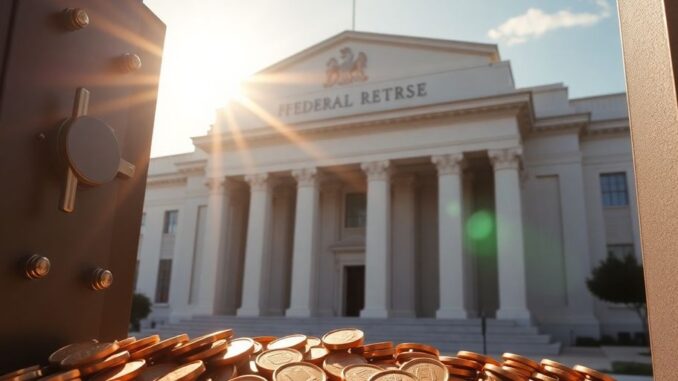
The Federal Reserve’s monetary policy decisions significantly influence savings account yields. While the Fed has paused rate hikes to combat inflation, future adjustments will depend on economic indicators. Savers are advised to capitalize on current high yields before potential rate cuts.
Key Takeaways
- When the Federal Reserve raises interest rates, banks typically increase savings account yields. Conversely, rate cuts often lead to reduced returns for savers.
- High-yield savings accounts (HYSAs) and certificates of deposit (CDs) are currently offering attractive annual percentage yields (APYs), with some exceeding 4%.
- Locking funds into a CD can protect savers from potential future rate declines, as the APY is fixed for the term.
- The Federal Reserve has held interest rates steady in the first quarter of 2025 after a series of 11 hikes to combat inflation, which had peaked at 9.1%.
- The Federal Reserve’s target range for the federal funds rate is currently 5.25% to 5.50%, the highest in 23 years.
The Fed’s Impact on Savings Rates
Typically, when the Federal Reserve increases interest rates, financial institutions respond by raising the yields on savings accounts to attract more deposits. Conversely, when the Fed decides to cut rates, savers often see a gradual decline in their returns. Currently, the Federal Reserve has paused its rate hikes, leading to a stabilization, and in some instances, a slight decrease in savings rates. This pause means that high-yield savings accounts and certificates of deposit are likely to continue offering competitive annual percentage yields in the short term, with some exceeding 4%.
Navigating Potential Rate Changes
Future Federal Reserve decisions on interest rates will be guided by economic indicators such as inflation data and employment figures. Should the Fed opt for rate cuts in the future, the yields on savings accounts may gradually decrease. For savers looking to secure higher returns, now is an opportune time to consider high-yield savings accounts or certificates of deposit. CDs offer a way to lock in a fixed APY, providing protection against potential future rate drops until the CD matures. However, savers must be comfortable with the inability to access their funds until the maturity date.
Political Influence and Savings Rates
There have been discussions regarding the potential for political influence on Federal Reserve decisions, specifically concerning the removal of Fed Chair Jerome Powell. While technically a president cannot remove Fed governors without cause, any change in leadership could lead to the appointment of individuals more aligned with the administration’s policy objectives. If rate cuts were to occur, variable-rate savings accounts and money market accounts would see their rates drop. CDs, however, would maintain their locked-in rates. While the Fed’s decisions are a primary driver of savings rates, other factors like inflation and market demand also play a role, particularly in mortgage rates.

